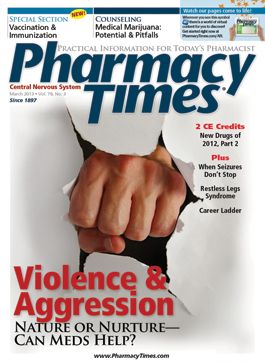Your Compounding Questions Answered
This month's column addresses compounding with glycolic acid.
Q: I am interested in compounding a glycolic 30% body lotion. Also, what is the percentage for facial peels using glycolic acid crystals?
A: Glycolic acid (hydroxyacetic acid) is an odorless, hygroscopic crystalline substance with a melting point of 80°C. It has molecular weight 76.05 and is soluble in water, methanol, alcohol, acetone, acetic acid, and ether. The pH of various aqueous glycolic acid solutions is: 0.5% pH 2.5; 1% pH 2.33; and 10% pH 1.73. It is a constituent of sugar cane juice and can be produced commercially either by reacting NaOH with monoacetic acid or by electrolyte reduction of oxalic acid. It is a mild irritant to skin and mucous membranes. It is this irritant characteristic that makes it useful as a skin peel. A relatively stable preparation of glycolic acid in hydrophilic ointment USP with pH adjustment to 3.5 using sodium hydroxide solution has been reported. While a specific beyond-use date (BUD) was not reported because the study focused on freeze-thaw cycles, a 30 days refrigerated BUD could reasonably be assigned to this preparation.
An extemporaneously compounded facial lotion has been reported:
Suggested formulation:
Glycolic acid 70% solution (aqueous).................................1.5 mL
Veegum, 5% colloidal solution............................................5.0 mL
Methylparaben..................................................................0.050 gm
Propylparaben...................................................................0.025 gm
Purified water q.s. ad......................................................100.00 mL
Suggested preparation method:
- Prepare the Veegum 5% colloidal solution in a graduated cylinder.a
- Dissolve the methylparaben and propylparaben in 94 mL of purified water. Heat to approximately 70 to 75° C to facilitate dissolution.
- Allow the paraben solution in (2) to cool to room temperature.
- Add the glycolic acid to the solution in (3).
- Neutralize the solution in (4) with ammonium hydroxide 28% solution, adding it dropwise with stirring until the pH is about 4 to 4.5.
- Add the Veegum 5% colloid to the neutralized solution in (5) and mix thoroughly. Rinse the cylinder with the solution in (5) and return the material to the preparation.
- Bring the mixture in (6) to final volume (100.00 mL) with purified water.
- Package, label, and dispense. Consider “External Use Only,” “Caution: Irritant” (or similar). USP <795> specifies BUD 14 days, refrigerated for aqueous extemporaneous preparations.
aVeegum 5% colloidal solution: Disperse 5 gm of Veegum in a small amount of water; stir vigorously to make a smooth paste. Bring to volume with purified water and continue stirring. When the colloid is allow to stand at room temperature, a smooth, creamy mixture is observed. Occasionally, a 40% solution is wanted. In these cases, note that addition of neutralizing ammonium hydroxide 28% solution to pH 4 to 4.5 will be necessary.
E-mail your compounding questions to compounding@PharmacyTimes.com.
Mr. Erikson is director of professional affairs and director of professional services at Gallipot, a Fagron company.

